Invented by Yuhuang Wang, Alexandra H. Brozena, Shunliu Deng, Yin Zhang, University of Maryland at College Park
Covalently functionalized carbon nanostructures are typically produced by modifying the surface of carbon nanotubes or graphene with functional groups such as carboxylic acids, amines, or thiol groups. These functional groups can be used to attach other molecules or nanoparticles to the surface of the carbon nanostructures, enabling the development of new materials with unique properties and functions.
One of the main challenges in the production of covalently functionalized carbon nanostructures is the separation of the modified materials from unmodified ones. Several methods have been developed for this purpose, including chromatography, electrophoresis, and centrifugation. However, these methods are often time-consuming, expensive, and require specialized equipment.
Recently, new methods for the separation of covalently functionalized carbon nanostructures have been developed, including size-exclusion chromatography, field-flow fractionation, and liquid-liquid extraction. These methods offer several advantages over traditional separation techniques, including higher throughput, lower cost, and simpler operation.
The market for covalently functionalized carbon nanostructures is expected to grow rapidly in the coming years, driven by the increasing demand for advanced materials in various industries. The electronics industry, in particular, is expected to be a major driver of growth, as covalently functionalized carbon nanostructures can be used to develop high-performance transistors, sensors, and energy storage devices.
In conclusion, the market for covalently functionalized carbon nanostructures is expected to grow rapidly in the coming years, driven by their unique properties and potential applications in various fields. The development of new methods for their separation will further accelerate the growth of this market, enabling the production of high-quality materials at a lower cost.
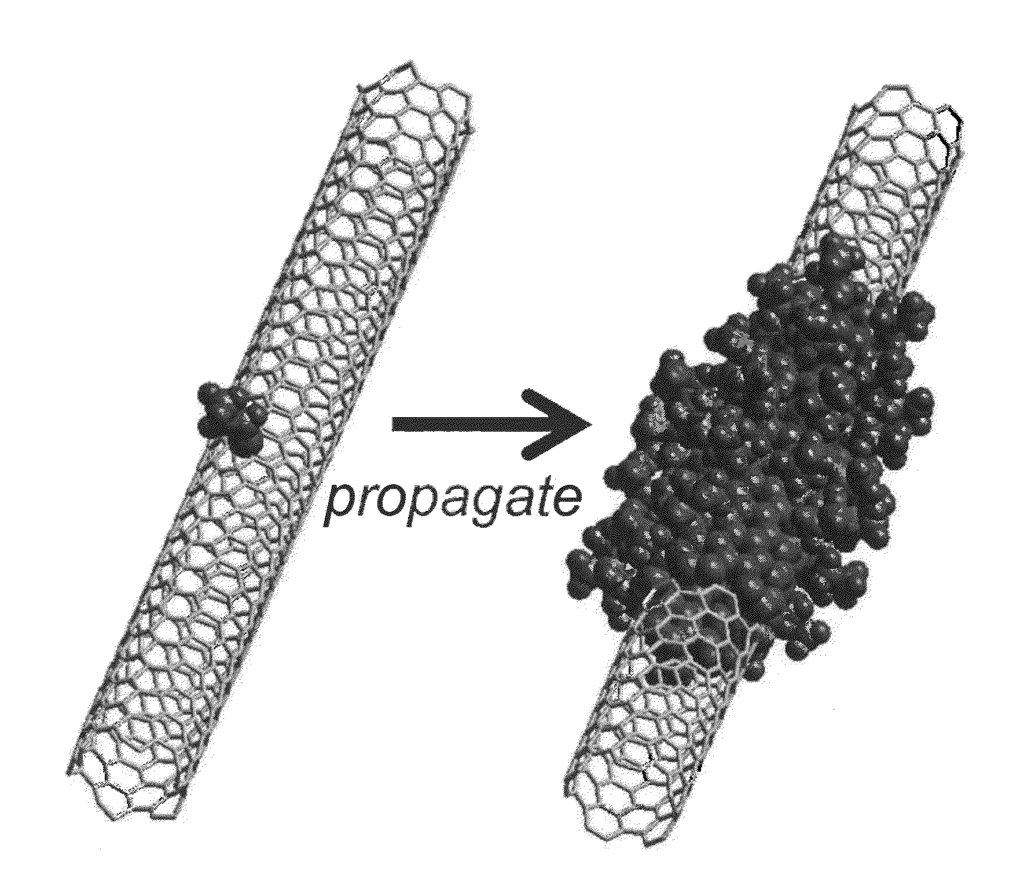
The University of Maryland at College Park invention works as follows
The invention is directed towards carbon nanostructures. Specifically, it is concerned with carbon nanotubes. It also includes methods for covalently functionalizing carbon nanostructures and methods for isolating and separating covalently functionalized carbon. Some embodiments of the invention react carbon nanotubes with alkylating agent to produce water-soluble, covalently functionalized carbon. Other embodiments involve carbon nanotubes being reacted with a thermally responsive agent and then exposed to light to separate specific chirality carbon nanotubes from a mixture.
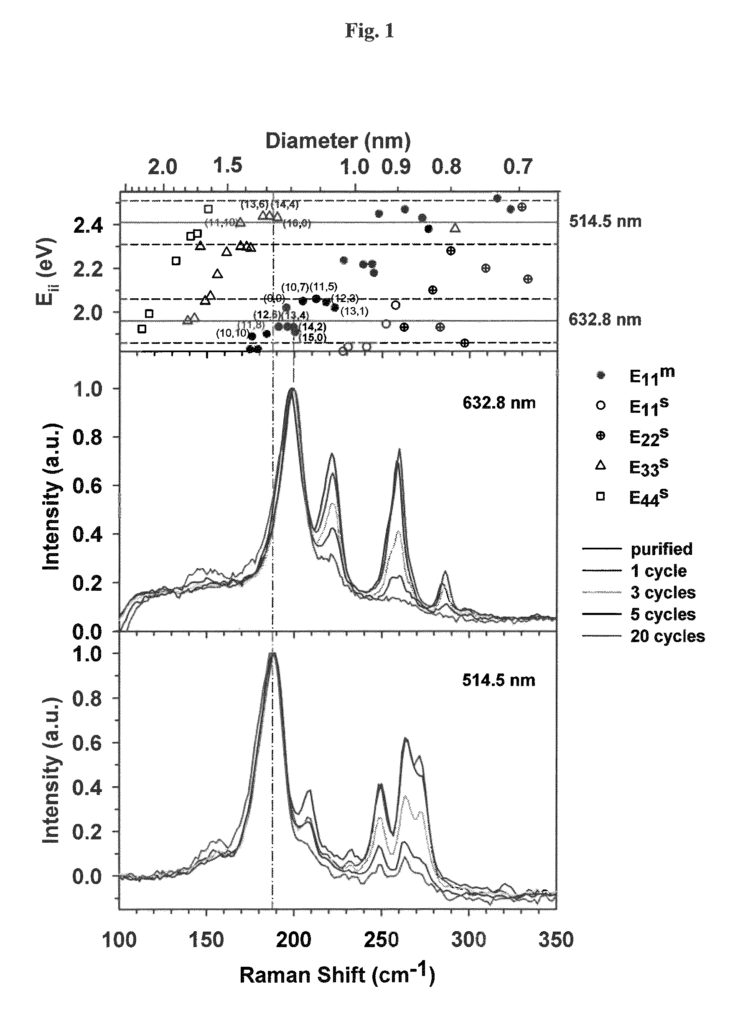
Background for Covalently functionalized carbon nanostructures, and methods for their separation
1. “1.
The present disclosure is generally applicable to carbon nanostructures and methods for covalently functionalizing them. It also relates to methods of separating and isolating carbon nanostructures that have been covalently modified.
2. Background
Carbon nanotubes are self-assembling nanostructures made of graphite sheets that have been rolled into cylinders. (Iijima Nature 354:56?58 (1991). If they consist of one cylindrical tube, such nanostructures can be called single-walled CNTs or SWNTs (Iijima and al. Nature 363 :603-605 (1993); Bethune, Nature 363 :605-607 (93). CNTs that contain two or more concentric tubes can be called double-walled (DWNTs) or multi-walled (MWNTs). These species’ diameters can range from 0.4 to ca. 3 nm and the length is ca. 10 nm to 100 mm.
CNTs have outstanding mechanical, structural, and electronic properties because of the unique combination their dimension, structure and topology. CNTs are used in many applications, including high-strength and conductive composites, electrode materials to high-capacity batteries, field emission displays and radiation sources, functional nanoscale devices, and conductive and high strength composites (Baughman and al., Science 297.787-792 (2002 )).”).
It is difficult to separate CNTs according to their structure. A SWNT can contain over 300 possible chiral structure, each unique indexed by an integer pair (n,m) within a narrow range of diameter (0.4-2nm). A difference of 0.01 nm in diameter between two SWNTs (e.g. (10,10) and (11,9)) could be indicative of a 0.15% density difference. This minute structural difference is difficult to distinguish with the best separation methods (Hersam Nature Nanotechnology 3 :387-394 (2008)). These methods rely on surface properties (Peng and Semke Nature Nanotechnology 2 :361-365 (2006): Zheng, J. Am. Chem. Soc. Soc.
A method to synthesize one type of CNT with only metallic or semiconductor properties is needed. Although there are some improvements in this area, there is no single perfect method. To overcome synthetic limitations, several chemical separation methods have been developed that can purify CNT samples with different electronic chiralities from bulk samples of mixed-species. Chirally resolving DNA wrapped CNTs is possible by changing the DNA nucleotide sequence, and then passing the sample through an Ion Exchange Column (Tu et.al. Nature 460:250-253 2009). This method produces the most pure samples of semiconductors. The procedure is optimized for semiconductors, but it does not achieve the same level of separation for metal CNTs. The cost of DNA is high and the yields of semiconducting semiconducting chirally resolved CNTS are between 0.1 and 0.8 g for every 100 grams of raw CNT samples. Ultracentrifugation with surfactant-encapsulated CNTs was also shown to be capable of sorting them by buoyant density. This allows for enrichment of metal types (Arnold and al., Nature Nanotechnology 1 :60-65 (2006); Green, Hersam, Mater. Today, 10:59-60 (2007) This technique has demonstrated acceptable yields at the?g level. Scalability is expected to increase with the addition of industrial-sized centrifuges, which could increase processing scale up to gram levels. Surfactants and ultracentrifugation can limit scalability. Excessive sonication can also cause damage to CNTs, and decrease their attractiveness.
In addition to these physical separators, a variety of metallic selective chemicals have been developed, including diazonium. (Strano, et.al., Science 301.1519-1522 (2003); Usrey, et.al., J. Am. Chem. Soc. Soc. This metallic selectivity could be due to the increased electron demand for these agents. Diazonium salts, for example, appear to undergo a charge transfer complex before covalent adding with CNTs. The positively charged transition state is stabilized at the Fermi level by higher-energy electrons (Usrey and al., J. Am. Chem. Soc. 127:16129-16135 (2005)). These highly selective chemistries do not provide any way to physically separate functionalized metallic CNTs and their semiconductor counterparts. The selectivity of the CNTs is usually lost before enough functional groups are available to be attached to nanotubes in order to achieve separation.
In one aspect, the disclosure discloses methods for covalently functionalizing carbon Nanostructures, e.g. CNTs. This involves introducing one or more defects to the carbon nanostructure, and then reacting with an alkylating agent such as 6-bromohexanoic Acid. The alkylation reaction is more likely to occur in the vicinity of existing functional groups or defects in the carbon nanostructure than at random locations on the carbon structure. This propagation chemistry is used to create carbon nanostructures with alternating sections or segments of functionalized and unfunctionalized areas.
The present disclosure also provides a CNT that is covalently functionalized using? (CH2)mCO2R2, as well as a method for preparing a compound functionalized using? (CH2)mCO2R2,
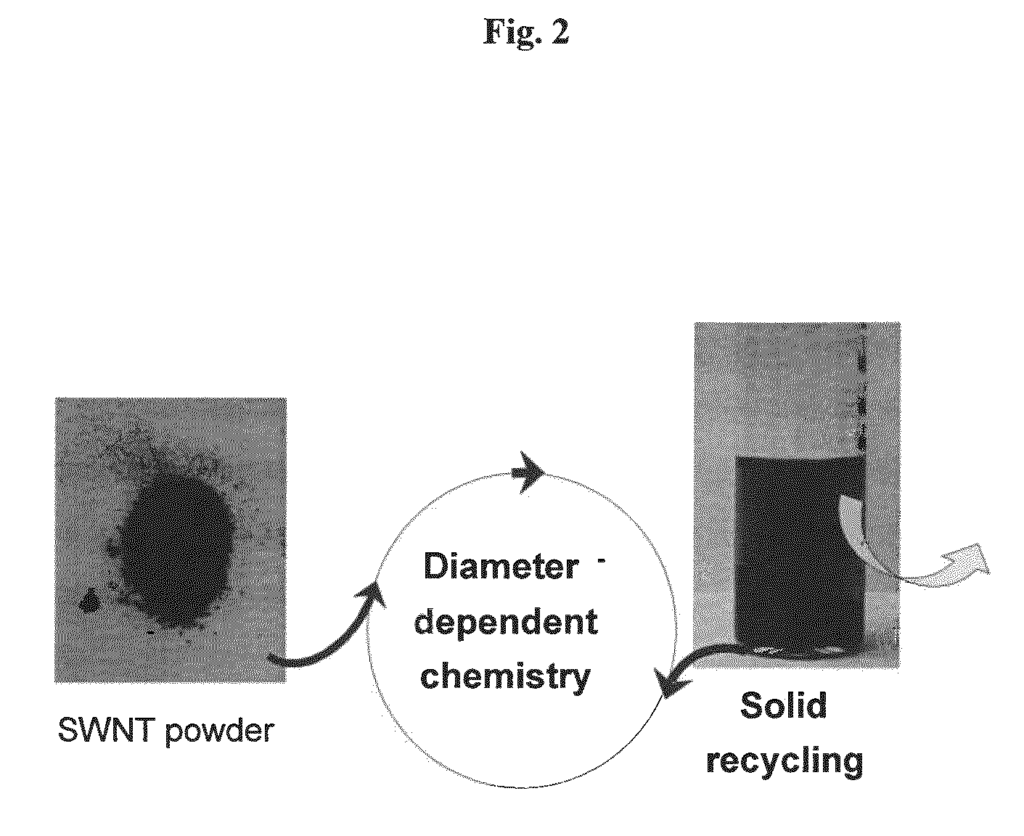
wherein:
In another aspect of the disclosure, methods are provided for isolating one type of CNT or chirality from a mixture of CNTs. The incorporation of hydrophilic moieties onto selected CNTs allows for the physical separation of those functionalized CNTs from a mixture intrinsically hydrophobic, e.g. by water extraction. CNTs’ unique optical and electronic properties can be used to isolate and separate a CNT with a specific chirality from a mixture. One embodiment of the procedure for preparing a type or chirality of CNTs free from other CNTs involves reacting a mixture CNTs with a compound with Formula I:nX(CH2)m.R1. ?I\nwherein:
X is halo
m” is an integer between 1 and 30;
R1 is CO2R2
R2″ is hydrogen or monovalent cation.
Partitioning the product from reaction of mixture of CNTs and Formula I in water; and separating water layer and organic solvent layer wherein water layer contains a CNT covalently functionalized by? (CH2)nCO2R2 of a particular type or with a particular chirality.
In another embodiment, the process of making a type or chirality CNT is to react or mix a mixture CNTs with thermally responsive reagents; expose the CNT products to light at a specific wavelength or range of wavelengths; then separate the CNTs which absorb light from those that don’t absorb light. The CNTs that absorb sunlight cause a physical change within the thermally responsive reagent through localized heating.
BRIEF DESCRIPTION DES DRAWINGS
FIG. “FIG.
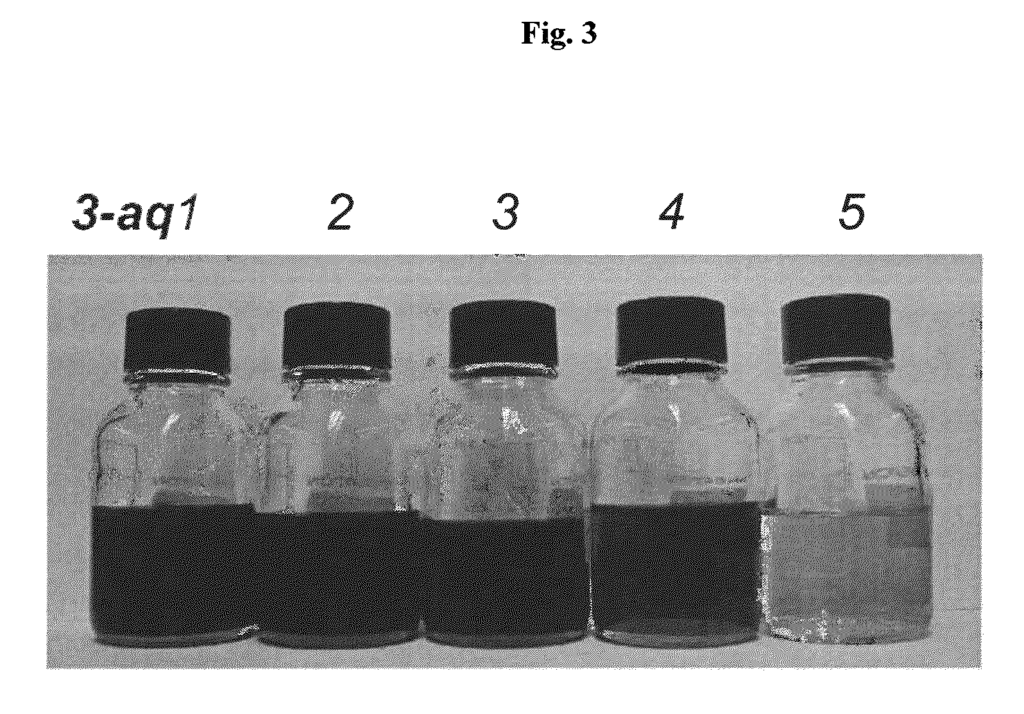
FIG. 2 is a scheme illustrating the solubility dependent water extraction of N-SWNT-[(CH2)5COONa]x via of progressive alkylcarboxylation extraction.
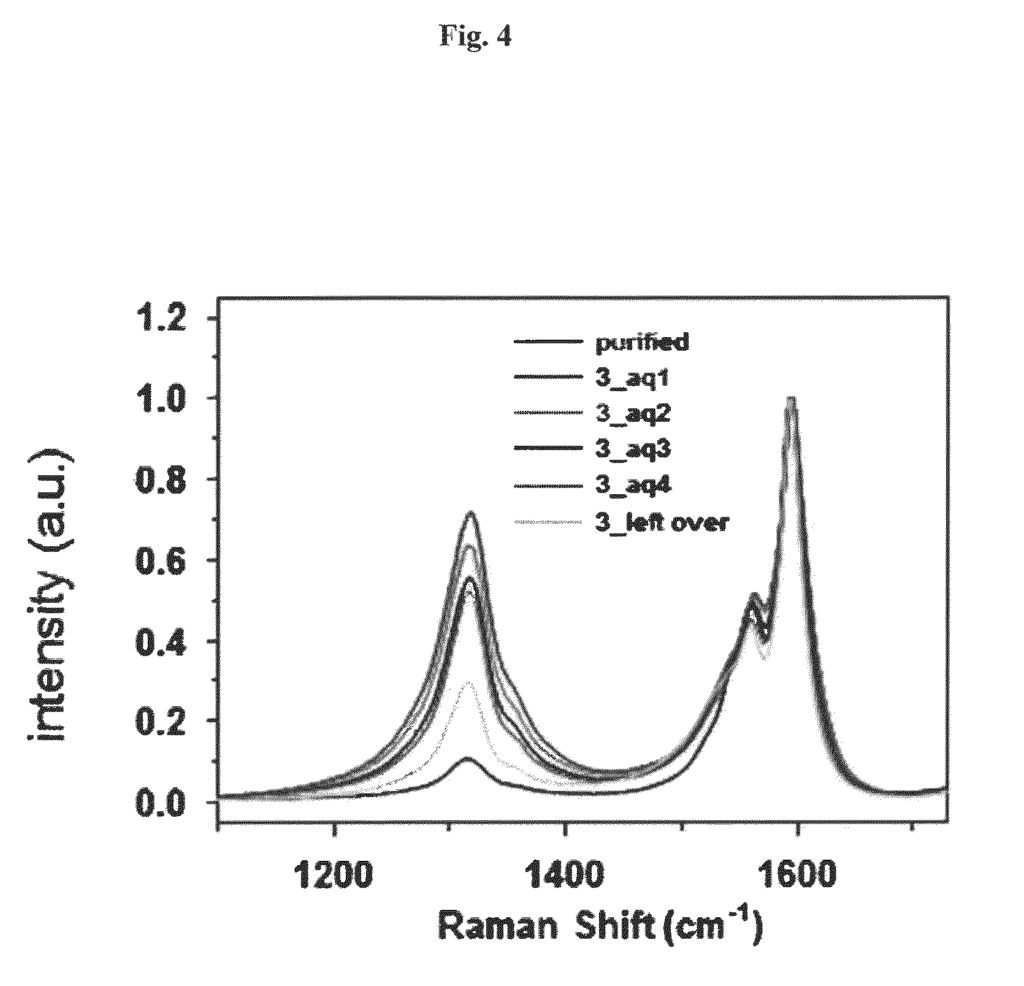
Click here to view the patent on Google Patents.
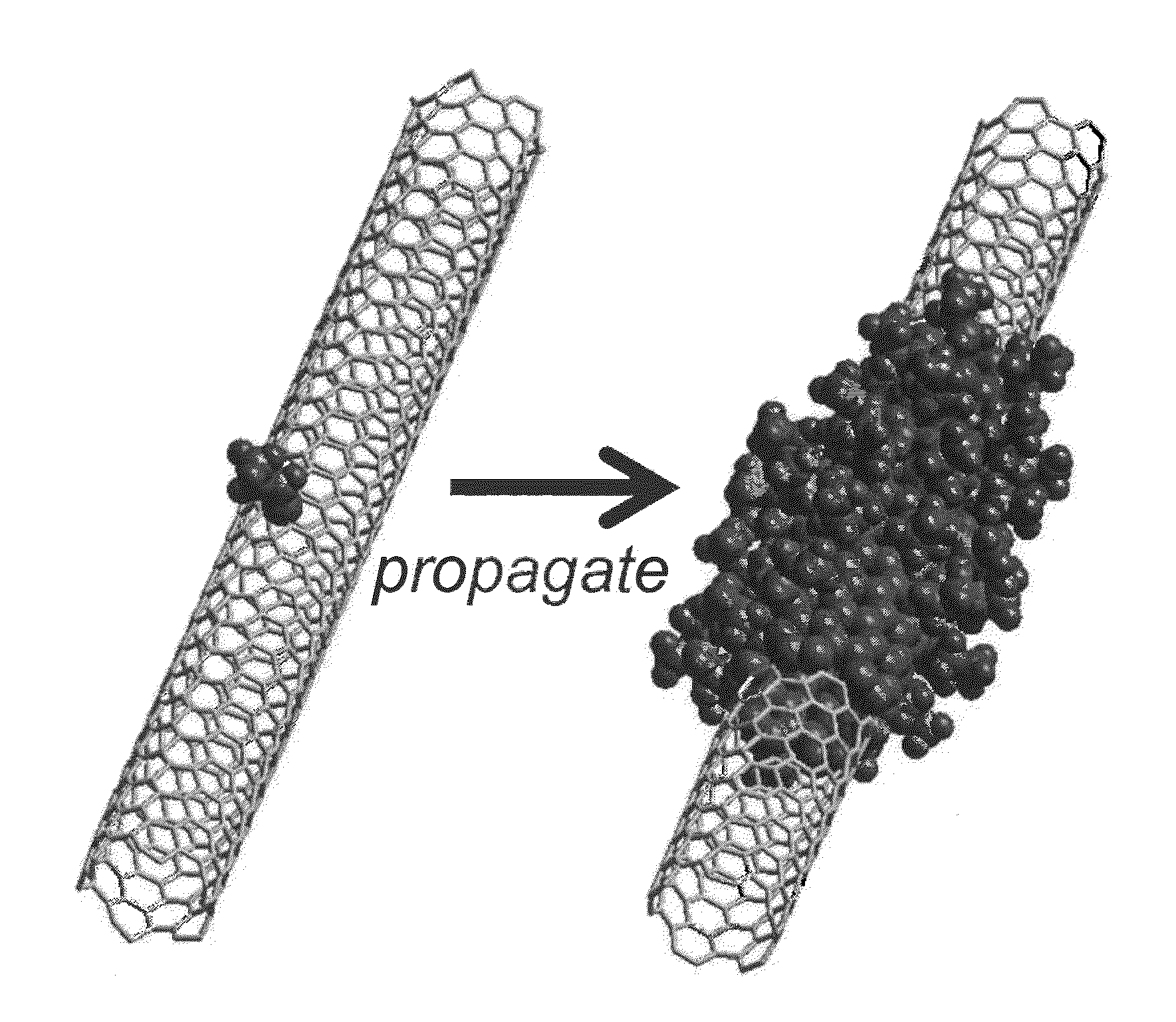
Leave a Reply